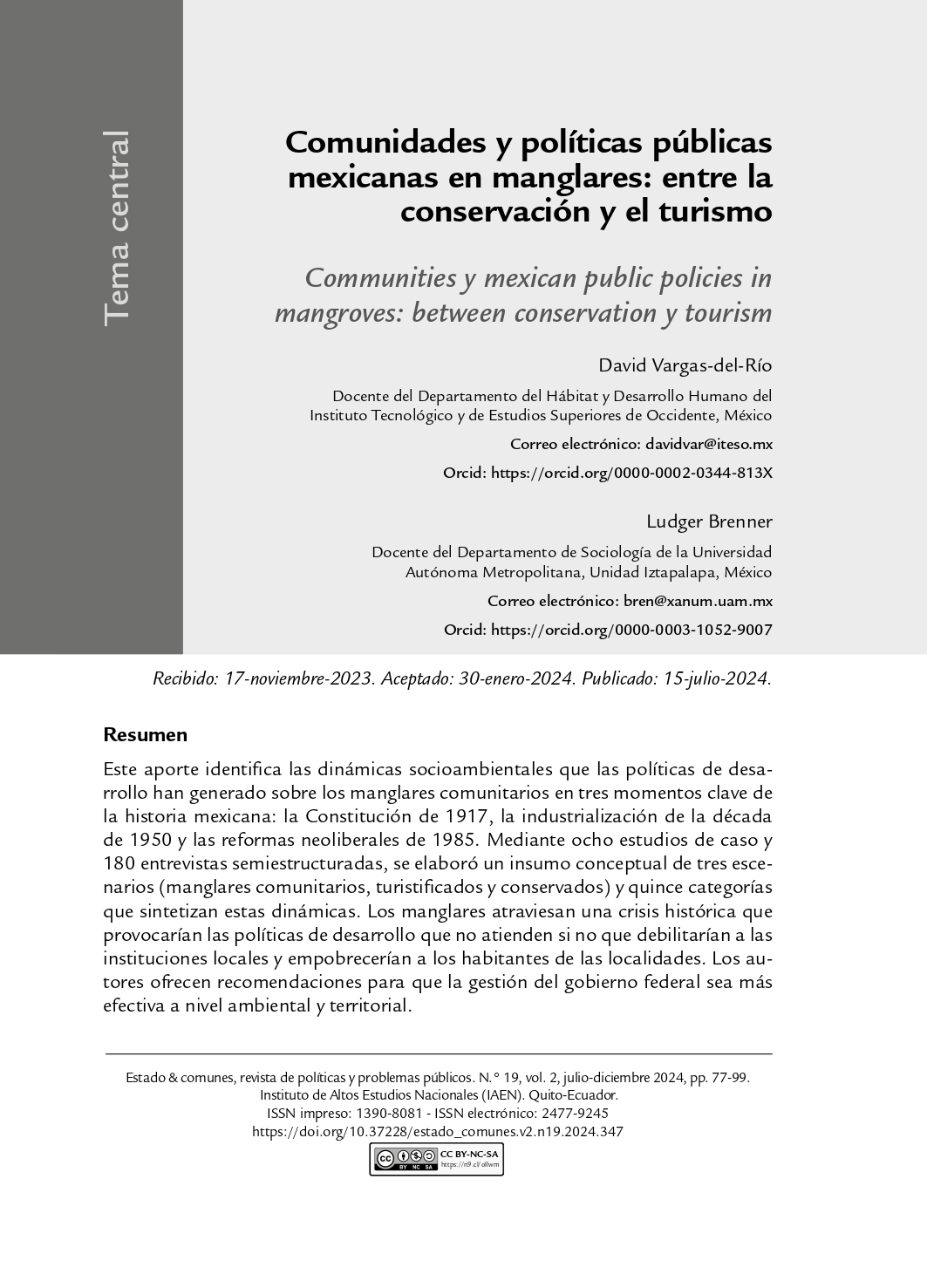Comunidades y políticas públicas mexicanas en manglares: entre la conservación y el turismo
Contenido principal del artículo
Resumen
Este aporte identifica las dinámicas socioambientales que las políticas de desarrollo han generado sobre los manglares comunitarios en tres momentos clave de la historia mexicana: la Constitución de 1917, la industrialización de la década de 1950 y las reformas neoliberales de 1985. Mediante ocho estudios de caso y 180 entrevistas semiestructuradas, se elaboró un insumo conceptual de tres escenarios (manglares comunitarios, turistificados y conservados) y quince categorías que sintetizan estas dinámicas. Los manglares atraviesan una crisis histórica que provocarían las políticas de desarrollo que no atienden si no que debilitarían a las instituciones locales y empobrecerían a los habitantes de las localidades. Los autores ofrecen recomendaciones para que la gestión del gobierno federal sea más efectiva a nivel ambiental y territorial.
Descargas
Detalles del artículo
Cómo citar
Número
Licencia
Derechos de autor 2024 David Vargas-del-Río, Ludger Brenner











